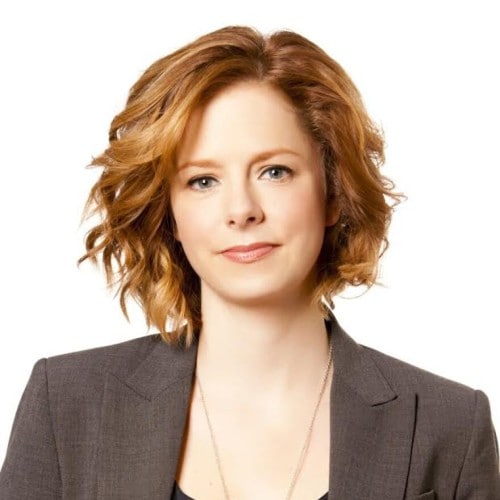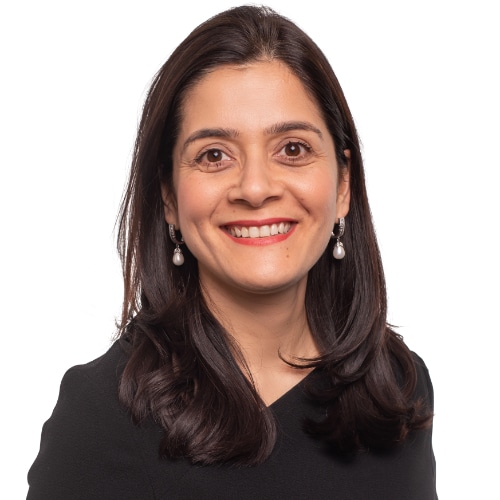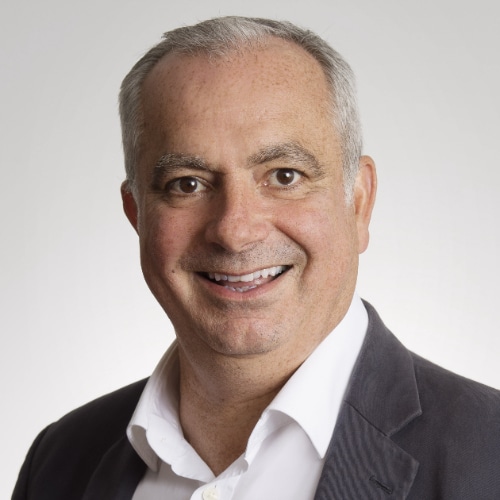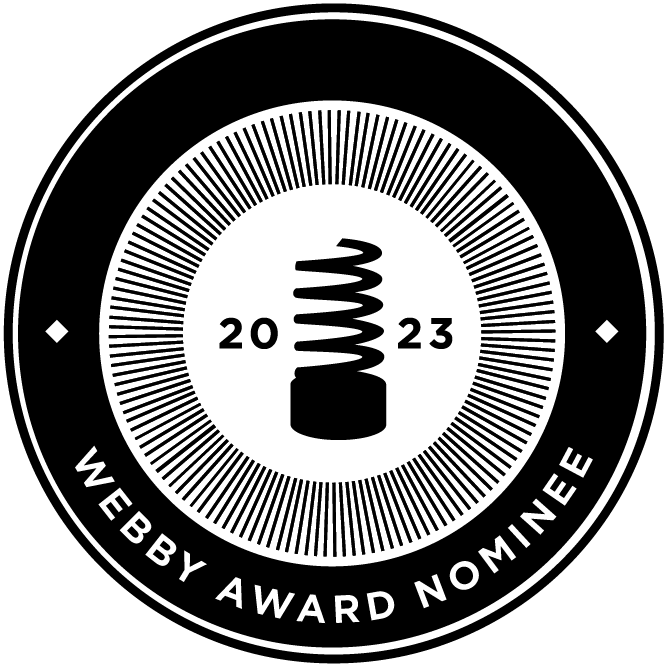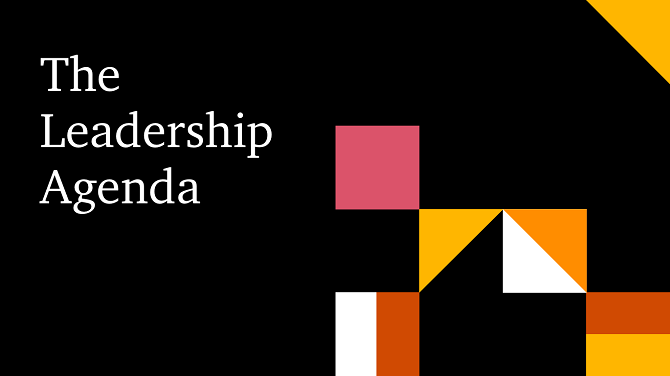{{item.title}}
{{item.text}}

{{item.title}}
{{item.text}}
Take on Tomorrow, the award-winning podcast from our management publication strategy+business, brings you Episode 8: “What’s the future of worker empowerment?”
The message coming from employees around the world is that they don’t want to be taken for granted. They’re finding new confidence in the shifting world of work. They’re calling on employers to listen, learn, and engage. So, how can businesses and employees find fresh opportunities in this era of new expectations? In this episode, hosts Ayesha and Lizzie hear from Tanuj Kapilashrami, group head of human resources at Standard Chartered, and Pete Brown, joint global leader for PwC’s people and organization practice, to discuss how employers and employees can thrive together.
Lizzie O’Leary
Podcaster and journalist
Ayesha Hazarika
Columnist and former senior political advisor
Tanuj Kapilashrami
Group Head of Human Resources, Standard Chartered
Pete Brown
Joint Global Leader, People and Organization,
Partner, PwC UK
2023 Webby award nominee for "Best Podcast" series
The April issue of s+b explores how companies can reduce their energy consumption by 31% by decade’s end and save a cool US$2 trillion a year—without sacrificing growth.
Sharp, actionable insights curated to help global leaders build trust and deliver sustained outcomes. Explore our latest content on the global issues affecting organisations today from ESG to value creation, technology and cyber to workforce transformation.
Tanuj Kapilashrami: Employees that are in the workforce and prospective employees—their expectations have changed significantly. And responding to those changing expectations: I see it as an area of great opportunity.
Pete Brown: There’s no doubt we are facing ever more frequent, significant levels of change. And I think working together in partnership, transparently and under a culture of trust, is something that will enable us to make the positive difference that’s required going forward.
Tanuj: All the research we have done tells us that if we want to continue to be able to retain, and then attract, our best talent, we’ve got to think about employment much more holistically.
Ayesha Hazarika: From PwC’s management publication strategy and business, this is Take on Tomorrow, the podcast that brings together experts from around the globe to figure out what business could and should be doing to tackle some of the biggest issues we face.
I’m Ayesha Hazarika, a columnist and former senior political advisor in London.
Lizzie O’Leary: And I’m Lizzie O’Leary, a podcaster and journalist in New York.
In this episode, we’ll be talking about labor markets. Over the last few years, employees around the world have found new confidence in the shifting world of work, and they’re making their voices heard. But could worsening economic conditions impact worker empowerment? And how should employers respond?
Ayesha: Joining us is Tanuj Kapilashrami, one of the people we heard from at the start. She’s the group head of human resources at Standard Chartered, a global bank with tens of thousands of employees worldwide. She’ll talk to us about how the employer–employee relationship has shifted—and whether those changes are here to stay.
Lizzie: But first, we’re joined by Pete Brown, PwC’s joint global people and organization leader. Hi, Pete!
Pete: Hi, Lizzie. Hi, Ayesha. It’s an absolute pleasure to be with you today.
Ayesha: Pete, we’ve heard a lot about the dynamic between employer and employee. How do you think that’s changed in recent years? And what are the kinds of issues that companies are facing right now?
Pete: So, actually, I’ve been working in this space for, gosh, over 25 years, and many of the issues have been around for some time. I think what we’ve seen certainly over the last two to three years is the fact that these issues are all hitting organizations, us as human beings, at the same time. What’s on the mind of workers? A number of things. Clearly, they want to be paid fairly for what they do, but they actually also want to have purposeful work and work that’s got meaning. What workers also want is flexibility and agility. People have really evaluated what’s important to them, and, actually, how do you fit work around their busy lives. So, they expect flexibility, agility; they expect a focus around well-being—not just mental health but their whole well-being, financial well-being, physical well-being. And what they also expect is an organization that’s investing in them in terms of their capabilities, their skills. And, last but by no means least, they expect to work for leaders who have integrity, who are open and transparent, and leaders who genuinely are listening, embracing ideas, and actually showing some vulnerability. You are going to make mistakes—and, actually, that humility, to show that to your employees, I think is really, really important.
Lizzie: Pete, we’re going to come back to you later to hear more about what you found in the global Workforce Hopes and Fears survey. But, Ayesha, you spoke to Tanuj Kapilashrami, group head of human resources at Standard Chartered.
Ayesha: Yeah, that’s right. And Standard Chartered operates in more than 50 markets, serving over 9 million individuals and another 20,000 corporate customers. So, I was really keen to hear her take on the challenges facing global business. I began by asking her how the bank’s approach to human resources underpins its operations.
Tanuj: One of the approaches that we have taken in the firm is to be incredibly data-led. So, when we started talking about a move to hybrid in a big way, there was a pushback from some of the more traditional parts of our organization to say that’s a very Westernized concept, right? You know, flexible working is not something that’s going to work in India or Hong Kong or Shanghai, because people live in small homes or people live in joint families. When we were faced with this challenge, we said to our senior leaders: why don’t we ask our colleagues? And over a period of a year, we asked our colleagues four times on where and how they want to work. And the data was absolutely clear. Almost 80% of our colleagues told us, globally, even in markets where we thought flexibility was not a desired norm, that they would like to work flexibly—minimum 50% of the time. So, one of the challenges I find is, traditional businesses being much more led by their perceptions around what employees want and taking a much more data-led and a client-led approach to designing HR products, I think is a big shift. We are product managers in HR. Employment is our product. And the same discipline that you bring in to designing consumer products, we need to bring the same discipline in designing people-related policies and products inside companies.
Ayesha: And, Tanuj, you just touched upon a point of conflict that you might have to navigate between thinking about what your employees want, and that might sometimes clash with preconceptions from senior management. How do you navigate those tensions?
Tanuj: Well, I mean, there are a couple of things: start with data, not with emotion. The second bit I will always say is: don’t be afraid to experiment and do small pilots. We launched an internal gig economy talent marketplace; people can take on a gig in addition to their full-time job. Now, a lot of traditional bankers didn’t think that that was going to be an idea that’s going to be successful, right? I mean, why would somebody want to sign up to a gig if you’re not going to pay them more or you won’t give them extra bonus? And we said, why don’t we pilot it?
So, we piloted in India, where we employed 12,000 colleagues for six months. Within a year of running that pilot in India, we had almost 500,000 hours of unlocked productivity that was given back to the company. People were getting part of an exciting project and the cohort that was on the talent marketplace, their engagement with the bank, their retention levels in the bank and discretionary effort was much higher.
And the third thing that I’m a big fan of is the idea of co-creation. You know, I’m a firm believer that the best ideas don’t come from head offices in London, Singapore, Hong Kong, New York. The best ideas come from people who are closest to the challenges. Co-creating with our colleagues, you know, going to them with some of the challenges we face and asking them to lean in with solutions, has helped us get great buy-in. But, actually, what it’s helped us do is increase engagement levels in the company. So, this idea of co-creation is a huge part of our people strategy.
Ayesha: Now, we hear a lot about a lack of skilled labor as an ongoing problem for different businesses. Is this something that you’re seeing and experiencing? And, if so, how do you address those challenges?
Tanuj: There was a view that as the world gets into recessionary trends, as cost of living goes up, attrition will go down because people will want to stick with their jobs. That’s not being evidenced by data. You know, data suggests that there is still a huge amount of movement in the external environment. Even our internal data tells us the percentage of people saying that they are going to be looking for another job in the next 18 to 24 months has gone up. So, clearly, this trend is here to stay.
We have taken a very skill-based view to this challenge. We said, “What are the skills we are going to need less of?” We also came up with jobs and skills that we will need more of. We need more data scientists. We will need more technologists. We will need more cybersecurity professionals. We were able to size it in terms of impact. And that led to a very concerted piece of work. We have kickstarted around upskilling and reskilling people who are in predominantly sunset jobs into jobs which are going to be sunrise jobs. So, everyone needs skills around sustainability, skills around being digitally proficient. Focusing on future-focused skills is a key pillar of our people strategy.
Ayesha: Another big area of focus for many businesses in recent years has been diversity and inclusion. What does that mean for your organization?
Tanuj: I genuinely believe that the reason we can solve our clients’ problems in a way that nobody else can is because we are a very, very diverse business. And while we have focused on representational diversity, one of the big areas of focus for us has been dialing up inclusion in a very big way.
So, four years ago, we defined what we call an inclusion index. A set of measures, which is about people feeling empowered to bring in their whole selves to work, having the tools to be able to do their job well, feeling that there is safety to be able to air contrarian views. And what we do is we measure an inclusion index down to very, very small teams in the company. And that tells us that, even with all of the work that you do on building a representationally diverse team, if you don’t fix barriers to inclusion, the agenda gets unbound very, very quickly.
Ayesha: What do you do when sometimes you have different visions and values and ideologies which clash or, or compete with each other? How do you navigate that under the umbrella of being an inclusive workplace?
Tanuj: We will very often have senior leaders say, “I had an open conversation with my team, and I got three contrarian views.” So, trying to role-model from the top that we are going to be open to and welcome and celebrate contrarian views is a huge part of seeing more in others. Now, do we always get it right? No. Do we have pockets of tension in the company? Yes, we do. But the principle is that we are going to create an environment where people feel safe to be able to share their opinions, and if they don’t feel safe to do it in an attributed way, we will create channels for them to be able to do it in an anonymized way.
Ayesha: There is this very interesting changing dynamic between workers and businesses. And what do you see in the future for that relationship? Do you think we’re going to see a fundamental shift in the power balance?
Tanuj: The shift between employee expectations has already happened. Employees that are in the workforce and prospective employees—their expectations have changed significantly. And responding to those changing expectations: I see it as an area of great opportunity. If you can get employee advocacy as a force for good, the impact that it can have on a better working environment, better workplace policies, also getting employees to be ambassadors of the brand, into the community and the society. So, I don’t see that shift as a negative. I see, actually, that as a huge positive. If we can tap into it well, I think it would have really great outcomes for clients, colleagues, and the broader communities within which we operate.
Ayesha: How do you think business leaders view this? And what advice would you give to business leaders who are maybe feeling a bit nervous about this shift in the balance of power?
Tanuj: My encouragement to leaders is, you know, be open-minded to different viewpoints and different voices. Demonstrate that curiosity. And the second advice is, be vulnerable. You know, sometimes showing a little bit of vulnerability and saying that this is all very new to me; I don’t know what the answers are, but I’m willing to be open-minded and I’m willing to learn goes a very, very long way in creating a level of trust within the workforce. And, actually, colleagues wanting to lean in and want to help you and be part of the change that they want to see within the company. So, curiosity, vulnerability, authenticity would be some of the tips that, you know, I’m trying to imbibe myself every day.
Ayesha: Now, the economic outlook in many parts of the world is really bleak right now. How do you think that’s going to change the balance of power between employers and employees?
Tanuj: All the research we have done tells us that if we want to continue to be able to retain, and then attract, our best talent, we got to think about employment much more holistically—and flexibility, career development, and growth opportunities, the kind of support that we can give them to upskill themselves to continue to remain relevant in the world of work. And our approach to this is to think about this challenge far more holistically than perhaps we have done traditionally.
Ayesha: Well, very wise words and I think lessons there for all of us. Tanuj, it’s been such a pleasure speaking with you, and thank you so much for talking to us on Take on Tomorrow.
Tanuj: Thank you very much, Ayesha. Great being part of the discussion.
Lizzie: PwC’s Pete Brown, joint global people and organization leader is back with us to dig into some of these issues. Pete, what stood out to you about that conversation?
Pete: I think actually implicit in pretty much everything she said was a bedrock of trust: trust to enable workers to bring their best to work and to deliver the best. Because when people are working in an environment where they trust their colleagues, they tend to do their best work. I think she touched around the Standard Chartered Inclusion Index. But what I really liked as well is the focus not just on diversity, but actually around, how do you create an inclusive environment such that you’re embracing all people within your workforce, in particular those with views that differ to your own?
Ayesha: You and your team released PWC’s Global Workforce Hopes and Fears survey of more than 52,000 workers. I think it’s one of the largest of its kind ever conducted. Tell us a wee bit more about that and about your findings.
Pete: Unsurprisingly, given the cost-of-living crisis, pay is the key motivating factor, with most employees looking to switch jobs if they’re able to increase their salary. But very close on the back of that, some really interesting findings, actually. One is employees are prioritizing where and how they work; they expect to be able to work in a hybrid manner, and that’s the clear preference of most workers where that’s possible. One in five workers are actively looking to leave their place of work. And particularly amongst those people who have in-demand skills.
Ayesha: And, Pete, your survey, the Hopes and Fears survey, came out in May 2022. Now, quite a lot has changed since then, particularly this big inflation crisis that we are seeing across different economies. How do you think that’s changed the dynamic between employers and employees? Who do you think’s holding the cards right now with this cost-of-living crisis happening?
Pete: Workers certainly hold the cards, particularly if they have in-demand skills. And we haven’t seen that drop off, even now, we are starting to see those inflationary pressures at play. We know that those people with skills are more likely to ask for a promotion, to ask for a pay rise. We also know they’re happier at work and more fulfilled. What we are also seeing in the market though is a lot of movement. Talented workers are jumping ship and moving to other organizations. And there’s some interesting dynamics in play in some sectors where we are seeing on one side of an organization some layoffs starting to happen. But the other side of the same organization, they’re still recruiting.
Lizzie: You’re describing a certain kind of empowered worker, and I wonder how you measure that. Who’s empowered? Who’s not? And, someone who is empowered: what can they ask for and demand in their working environment?
Pete: For me, it’s actually all around trust, and it’s around trusting your workers. If I give you an example: at PWC, we have a policy around dress code, which we call Dress for Your Day. Now, if you ask me to send you the link to the dress policy for Dress for Your Day, all I would send you is a piece of paper that said “Dress for your day.”
Lizzie: And presumably that improves workplace culture.
Pete: Well, I think it does, and I think culture’s such an interesting kind of topic, and that sort of empowered culture, a culture that promotes innovation—you are going to make mistakes, but you need to learn from those. And, actually, that’s not a bad thing, right? It’s a really positive thing, as you progress ideas. But to have people in an environment where they feel it’s okay to make mistakes, you know, requires, I think, leaders having great integrity—being open, being humble, but also an environment of inclusion.
Lizzie: Pete, one of the things that has sort of hovered over a lot of industries is this anxiety from workers that technology is going to put them out of a job. Is that a justified worry, or is there, like, a middle ground somewhere?
Pete: There’s no doubt some people are concerned about the impact of technology. Depending on what you read and the research you follow, anything being between 25 and 40% of jobs as we know them today are likely to be displaced or significantly impacted by technology in the next five years or so. And we’re seeing that happen. We’re seeing that accelerated, actually, as a result of the pandemic. Workers are actually very keen to upskill. I think it was something like three-quarters of the people we surveyed, actually the opportunity to learn new skills, digital skills, was right up there. You can’t protect jobs, but you can protect people. And I think we heard that in Tanuj’s interview: they’re doing some work around what are the kind of skills they need for the future. And, let’s face it, some of those jobs don’t exist today.
Ayesha: And, Pete, how do the demands of employees differ in different parts of the world? Because presumably it’s not the same everywhere. Or are there common themes across the world?
Pete: So, clearly there are cultural differences in different parts of the world. What the data shows us from the survey though, actually, is there was nothing statistically significantly different around the world. So, what workers were saying they were after were broadly the same. But I think there are other sort of pressures, if you like, other challenges, coming to bear in different parts of the world. So let me take a good example: the aging workforce. So, for example, if you go to Japan, you know the average age there is give or take around about 50. So, you’ve got an aging workforce, you’ve got people living longer because of advances in technology and medical care, and you’ve got, therefore, a real challenge around how do you equip a younger workforce to come on and take on those roles, to be able to sustain, actually, those people who are living longer.
And then if you flipped continents, and maybe you went to say, sub-Saharan Africa, you’ve got anything between 10, 15 million highly educated young people coming into the world of work every year for the next 10 to 15 years, and the average age in sub-Saharan Africa is give or take around about 15. So, you’ve got this huge influx of talented, capable people. How does that part of the world create the jobs, the roles for them to be able to sustain their working life and to be able to contribute to society?
Ayesha: Pete, what’s been really interesting from the conversations with you and Tanuj is that many employees really want some more flexibility with how they work, particularly post-pandemic. But do you find that that sometimes comes into conflict with what some more traditional business leaders want? How do you navigate these changing expectations from employees?
Pete: I think we’re seeing some business leaders make statements out around flexible ways of working and hybrid, and celebrating that. But I think, again, what Hopes and Fears shows us is that if you say that and then don’t deliver that, funny old thing, your employees will notice it. And in this digital world in which we live, they won’t be shy in sharing that on—name a social media channel. Talent, frankly, I think for an organization is more important than pretty much anything else. People are at the heartbeat of an organization. They’re the driving force of company value. It’s not acceptable to treat your employees as something different to your end customers.
Ayesha: Pete, you’re someone who’s really across these issues. You’re really steeped in this area of employer–employee relations. How do you hope things will change in the coming years? And do you have any fears or worries about the way that the world of work is headed?
Pete: There’s no doubt that we have some big challenges ahead of us. But in terms of workers and the relationship between employers and employees, I personally believe we’re on a really positive path, and we’re seeing some very good progress. We’re seeing workers’ preferences, their needs, beliefs, and well-being being much more fully considered. And we are seeing organizations responding to those, I think positively in most cases.
I think what’s also exciting is the role employers and workers play in creating broader positive change in the world. Calling out bad behaviors, being clear on purpose, and really working on building that trust. I think organizations, employers, and employees have an opportunity to really work together to make a difference.
Ayesha: Well, Pete, it’s been fascinating speaking with you and getting all your expertise and your insights. Thank you so much for speaking to us on Take on Tomorrow.
Pete: Thank you. An absolute pleasure.
Lizzie: Ayesha, that was so interesting. And I feel like one of the things I’m going to take away from this is transparency. And I mean that employees have pretty good detectors of when their employers are being straight with them and when they’re not. You know, when they are trusting them and when they are not. And the importance of being upfront with your people—because that is the thing that gives them buy-in and sort of creates an empowered, productive worker.
Ayesha: Yeah, I very much agree with you. I think what’s interesting is, in an era when there is this war for talent, and we are in this era where people, especially who have skills which are in demand, they definitely have more power. I suppose the only question I leave these conversations with is: if you are a worker who doesn’t have skills which are highly in demand, particularly in these times of high inflation, then it’s quite tricky. But, interestingly, both our guests said, “Look, this is something that employers have to think about and have to sort of get ahead of.”
Lizzie: And to try to bring them into the workforce.
All right. That’s it for this episode. Join us next week, when we’ll be asking: how do we ensure humanity stays ahead of technology?
Guest: I think that we are going through a really fundamental transition, driven by some remarkable general-purpose technologies. Those technologies have broad applicability across our economies. And because of that, they change the nature and the shape of companies, of industries, of labor relations—and, also, the dynamics between countries.
Ayesha: Take on Tomorrow is brought to you by PwC’s strategy and business. PwC refers to the PwC network and/or one or more of its member firms, each of which is a separate legal entity.
© 2022 PwC. All rights reserved. PwC refers to the PwC network and/or one or more of its member firms, each of which is a separate legal entity. Please see www.pwc.com/structure for further details.
This content is for general information purposes only, and should not be used as a substitute for consultation with professional advisors.

Global Clients & Industries Leader, PwC United Kingdom
Tel: +44 (0) 7590 353852

